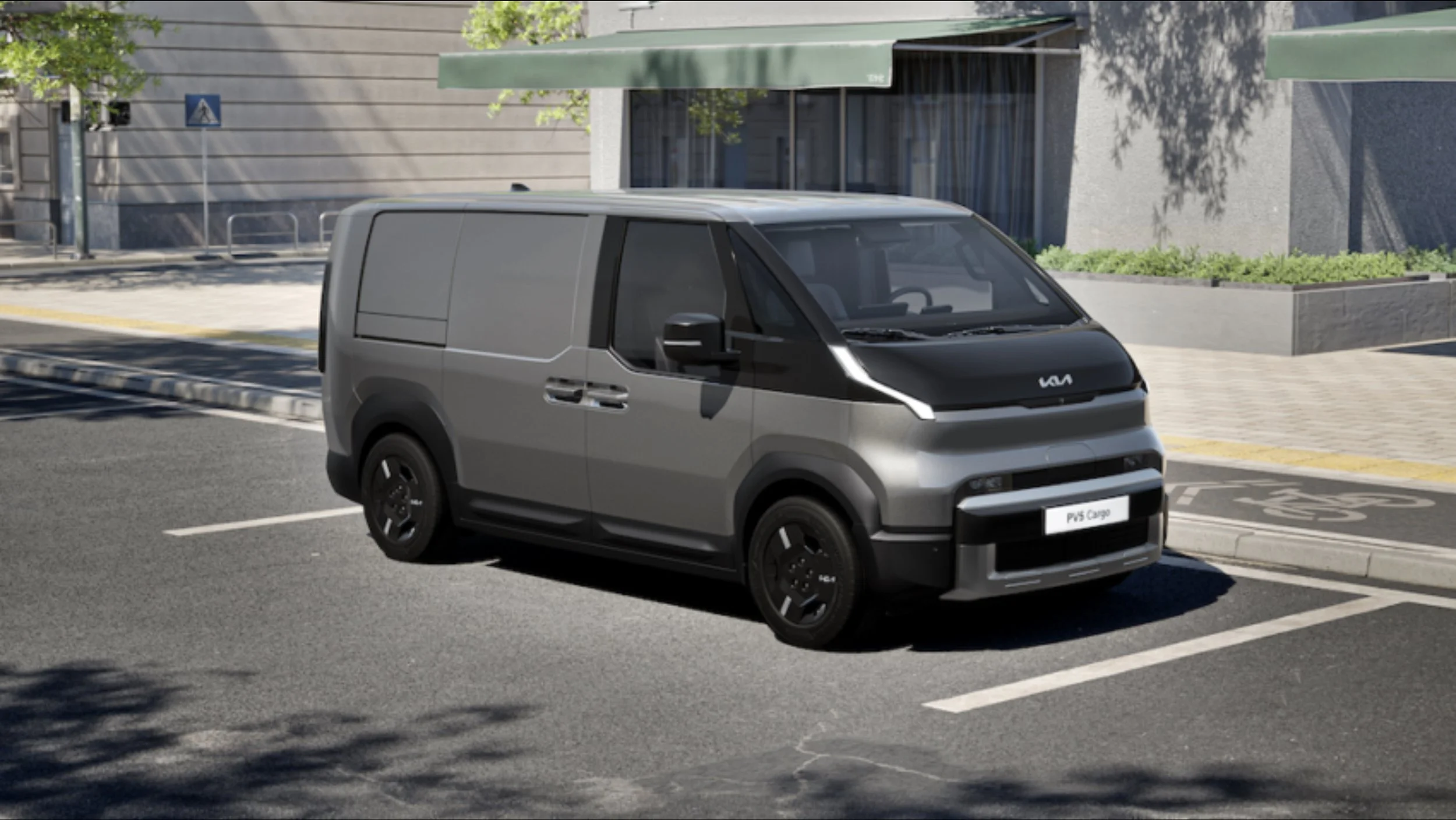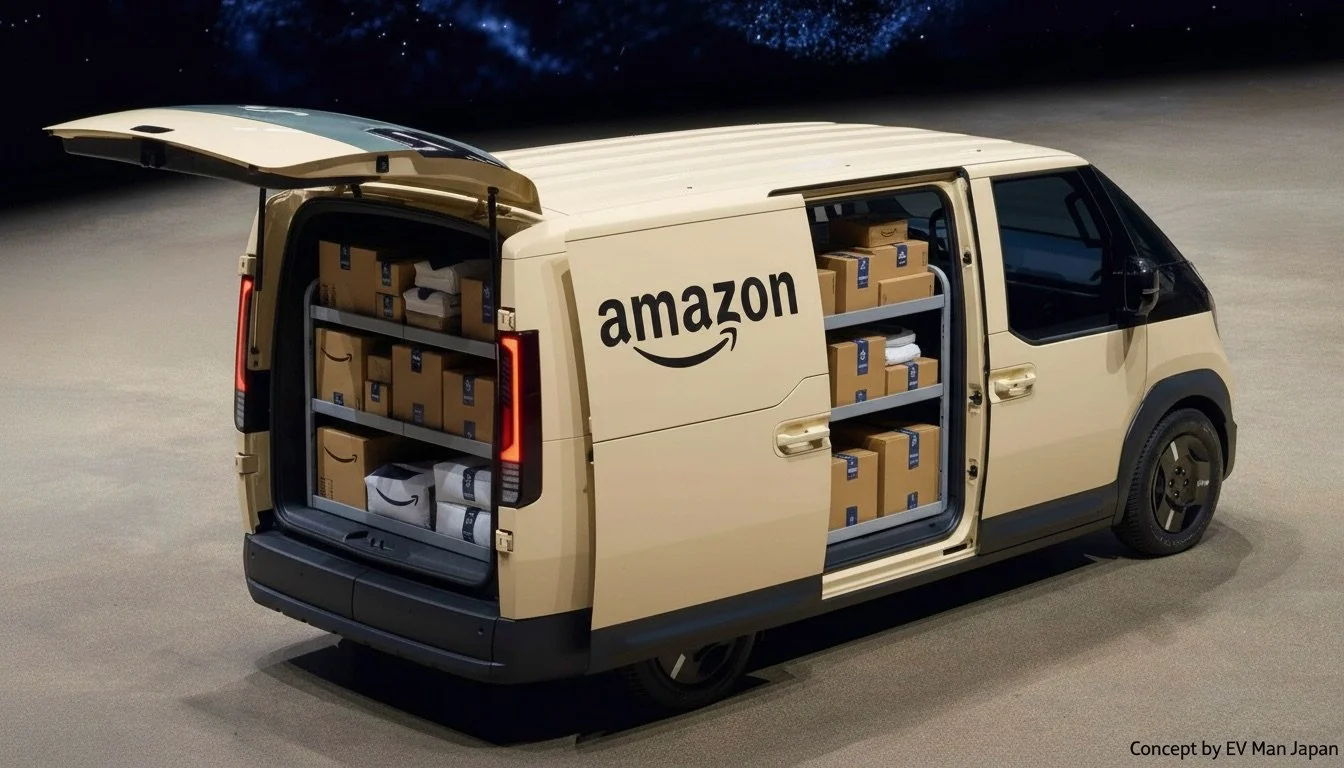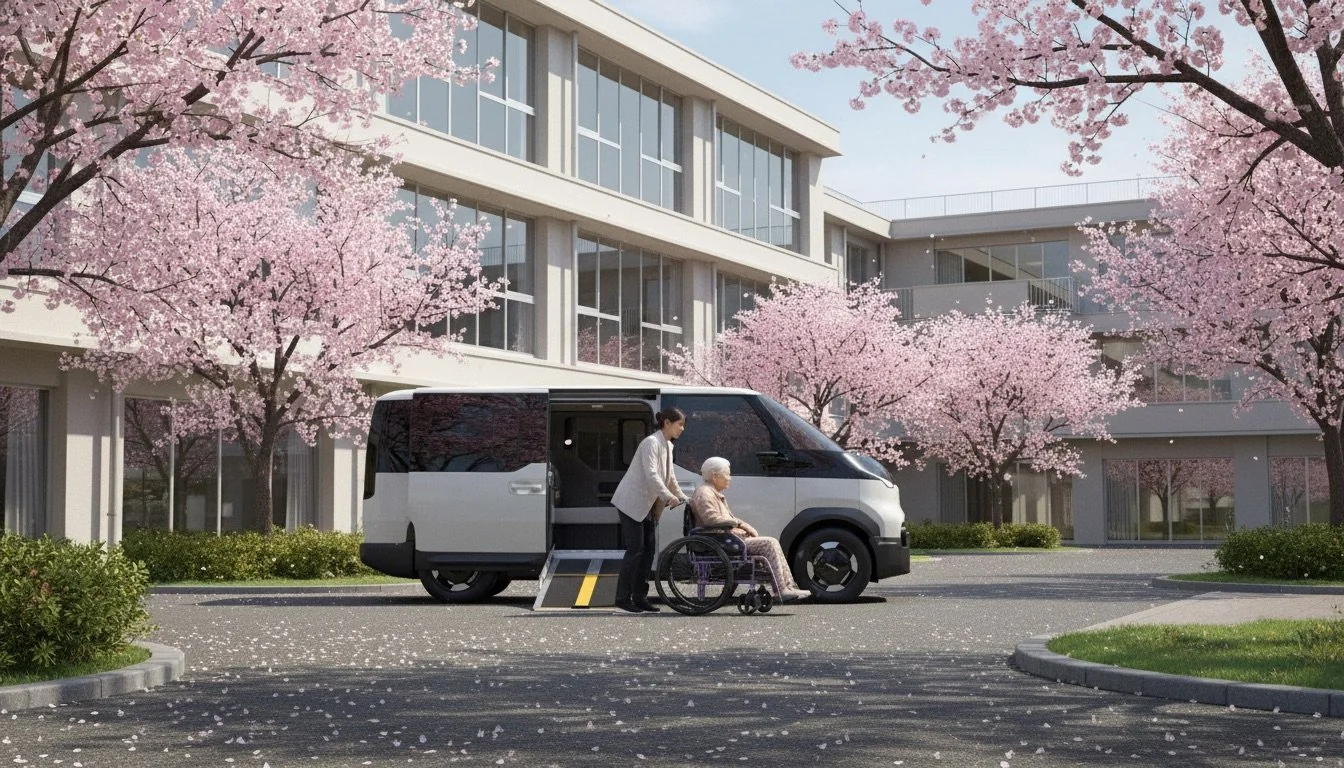Why Kia’s PV5 Could Be Japan’s Next Big EV Delivery Workhorse
The Many Bodies of the PV5
At the Japan Mobility Show 2025, Kia is expected to bring one of the most promising and adaptable EVs seen in recent years — the Kia PV5. Developed as part of Kia’s Platform Beyond Vehicle (PBV) strategy, the PV5 is more than just an electric van. It’s a flexible, modular platform that can transform into a delivery vehicle, a passenger shuttle, or even a wheelchair-accessible transport solution. Its versatility could make it one of the most important EVs for Japan’s commercial and mobility markets in the coming years.
A Platform Built for Adaptability
The Kia PV5 is designed to serve multiple industries through interchangeable modules built on the same electric chassis. Available in Passenger, Cargo, and Chassis Cab formats, the PV5 can be configured for everything from parcel delivery to shuttle transport. Its design allows businesses to customize the vehicle for specific needs — whether that’s adding refrigerated compartments for food delivery or adapting the interior for mobility assistance.
Underneath, the PV5 uses Kia’s E-GMP.S platform, a variation of the company’s successful electric architecture optimized for service and utility applications. This structure makes it easier to build multiple variants while maintaining efficiency and performance.
PV5 Cargo
Specifications
The PV5 will be offered with several battery options, depending on use case:
Battery options: 51.5 kWh, 71.2 kWh, or 43.3 kWh (for cargo variants)
Range: Approximately 400–412 km (WLTP)
Charging: 10–80% in around 30 minutes via DC fast charging
Vehicle-to-Load (V2L): Can power devices up to 3.6 kW
Cargo capacity: Up to around 5 m³ in the high-roof variant
These specifications make the PV5 practical not only for small business owners but also for larger fleet operations. With rapid charging and modular usability, the PV5 offers a real-world solution for Japanese companies shifting toward electric logistics.
Concept For an EV Amazon Delivery Truck
Potential in Japan’s Delivery and Mobility Market
Japan’s growing demand for sustainable logistics solutions makes the PV5’s arrival particularly well-timed. Companies such as Amazon Japan, Sagawa, and Yamato have all begun investing in cleaner last-mile delivery systems, and Kia’s modular van could be the perfect fit for that transformation.
The PV5’s ability to integrate refrigerated compartments makes it ideal for Japan’s food delivery industry, where convenience stores, supermarkets, and restaurants are increasingly relying on quick, temperature-controlled transport. This same modularity could appeal to courier services and small businesses looking for electric alternatives to kei trucks.
Competition in this space remains limited. Current electric options like the Mitsubishi Fuso e-Canter and Hino Dutro Z EV target larger-scale operations, leaving a gap in the light- to mid-size EV van market. If Kia positions the PV5 correctly, it could become the go-to solution for businesses across Japan.
Concept For an EV Food Truck
Partnerships and Local Adaptation
Kia has already announced a partnership with Sojitz Corporation, one of Japan’s major trading firms, to distribute PBV vehicles domestically starting in 2026. This partnership could be key to establishing a strong local network for sales, customization, and service support.
The modular nature of the PV5 also opens up opportunities for food truck applications, which are becoming increasingly popular in Japan’s urban and tourist areas. The PV5’s flat interior floor and customizable chassis could easily accommodate compact kitchen setups, café-style serving hatches, or even mobile vegan and vegetarian food units. Because of its V2L (vehicle-to-load) functionality, operators could power appliances directly from the van’s battery without relying on external generators — a major advantage for sustainable street food operations.
This new application could attract small business owners and independent chefs looking for a clean, quiet, and futuristic alternative to traditional gasoline-powered food trucks. It also ties neatly into the growing EV ecosystem in Japan, where local governments are increasingly supportive of eco-friendly mobile commerce.
With potential collaborations on the horizon, the PV5 could also find use with public institutions such as Japan Post, which operates thousands of compact vans nationwide. A PV5 customized for postal routes — with quick access storage and zero-emission performance — would align perfectly with Japan’s carbon-neutral goals.
PV4 Wheel Accessible Vehicle
Meeting the Needs of an Aging Society
Beyond delivery and logistics, the PV5 could play an important role in Japan’s welfare and healthcare sectors. Kia has already showcased a wheelchair-accessible PV5 WAV (Wheelchair Accessible Vehicle) model overseas, featuring a side-entry ramp and flexible interior seating. In Japan, such vehicles could serve retirement homes, hospitals, and municipal welfare programs.
Because many of these vehicles spend long hours parked between trips, the ability to charge overnight and operate quietly and cleanly during the day offers major benefits for local communities.
Looking Ahead
Kia’s appearance at the Japan Mobility Show 2025 will be a pivotal moment for the brand’s future in Japan. The PV5 embodies the company’s vision of adaptable, customer-focused mobility — something that aligns perfectly with Japan’s evolving transportation landscape.
If Kia successfully demonstrates the PV5’s range of configurations — from delivery vans to passenger shuttles and mobile food trucks — and leverages its partnership with Sojitz to localize production and support, it could establish itself as a leading name in Japan’s next generation of electric commercial vehicles.











